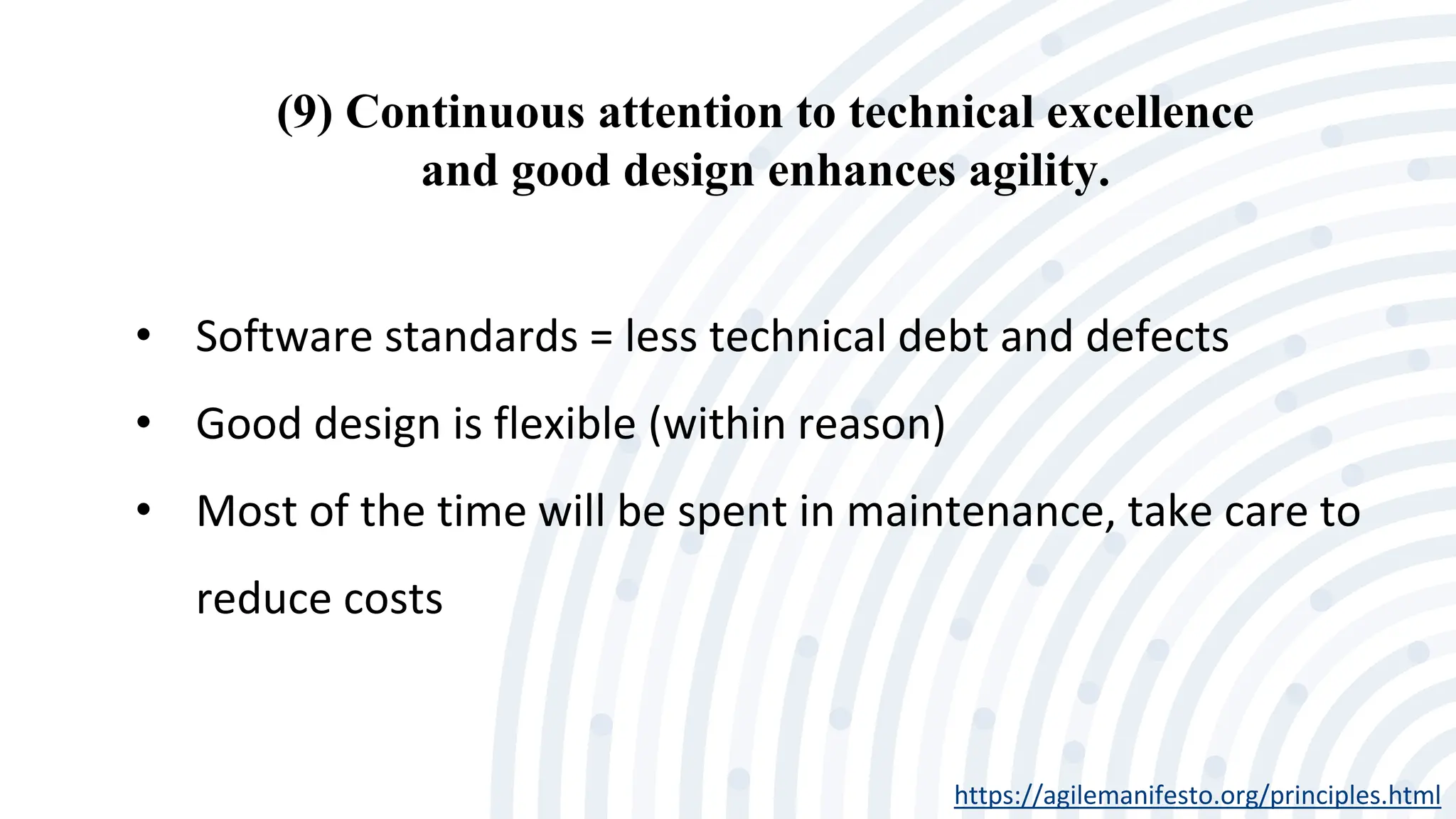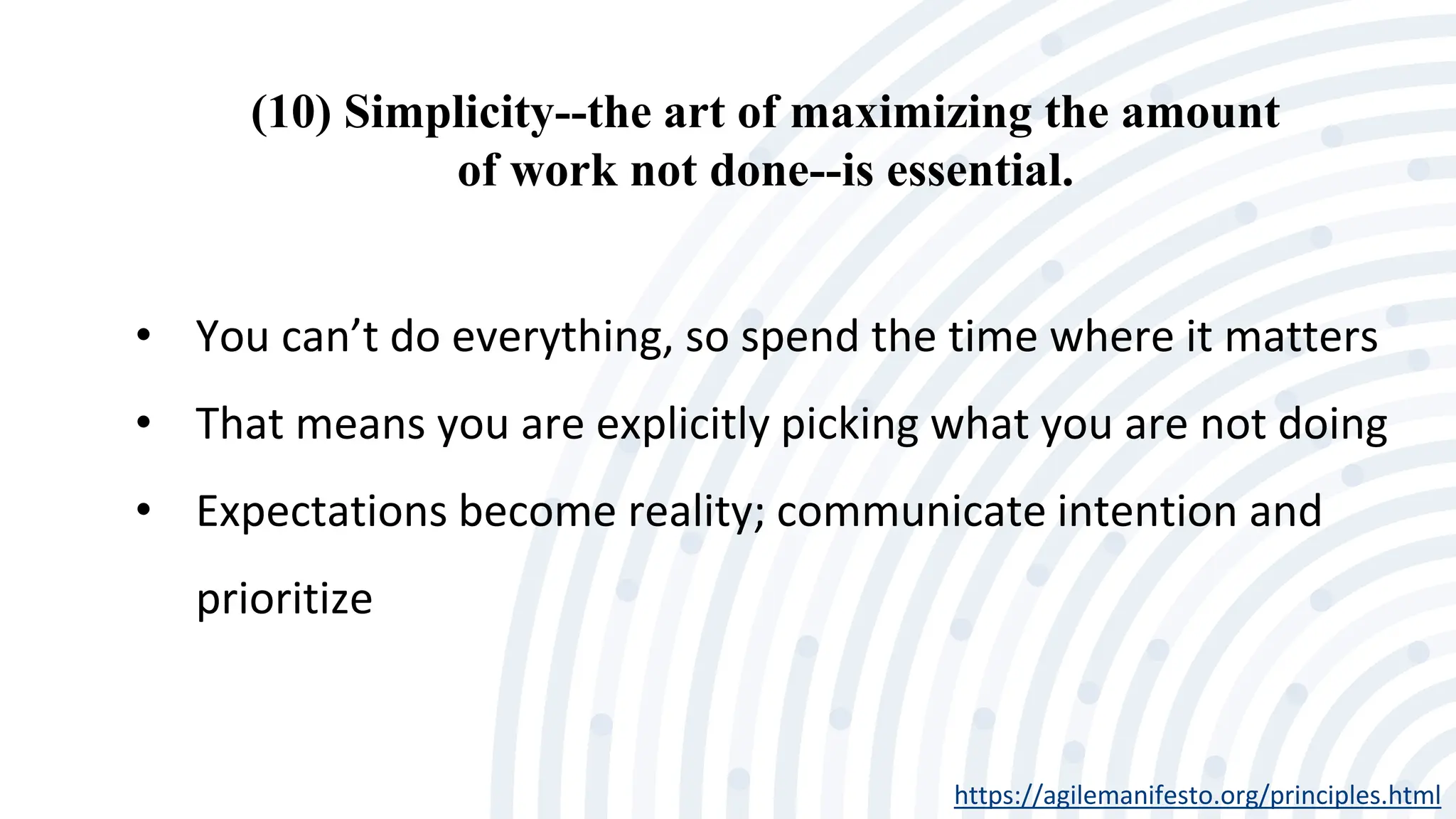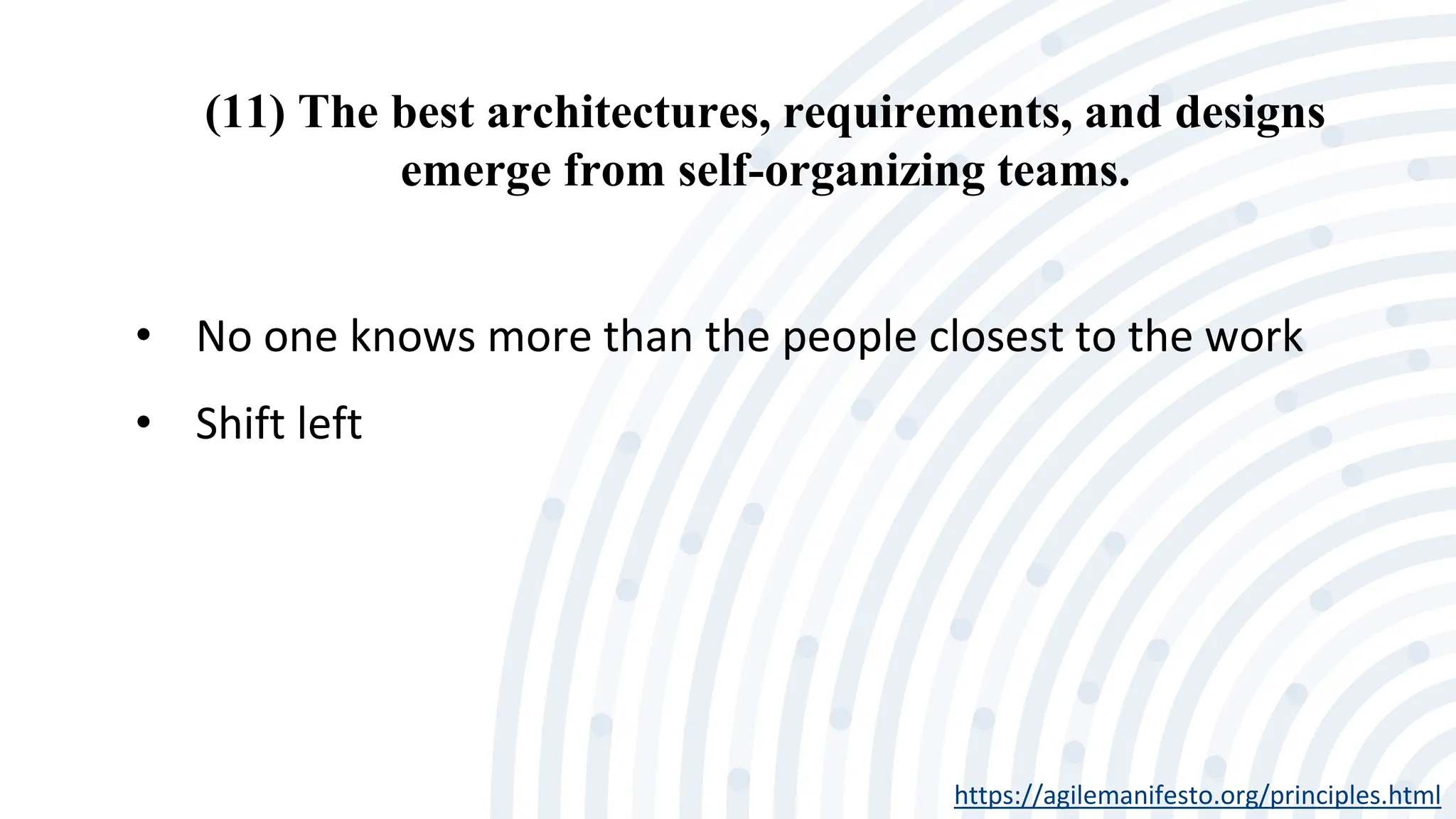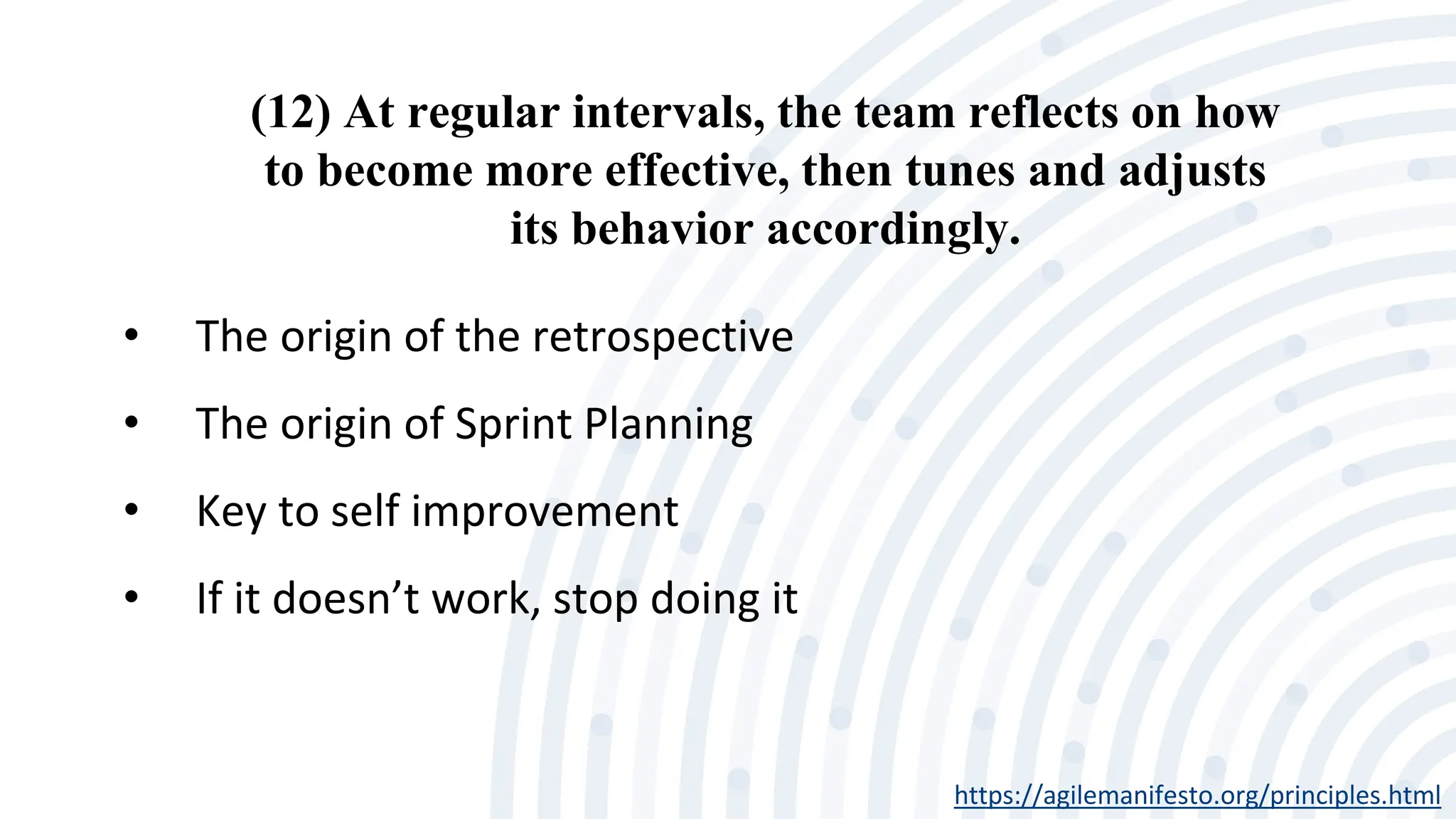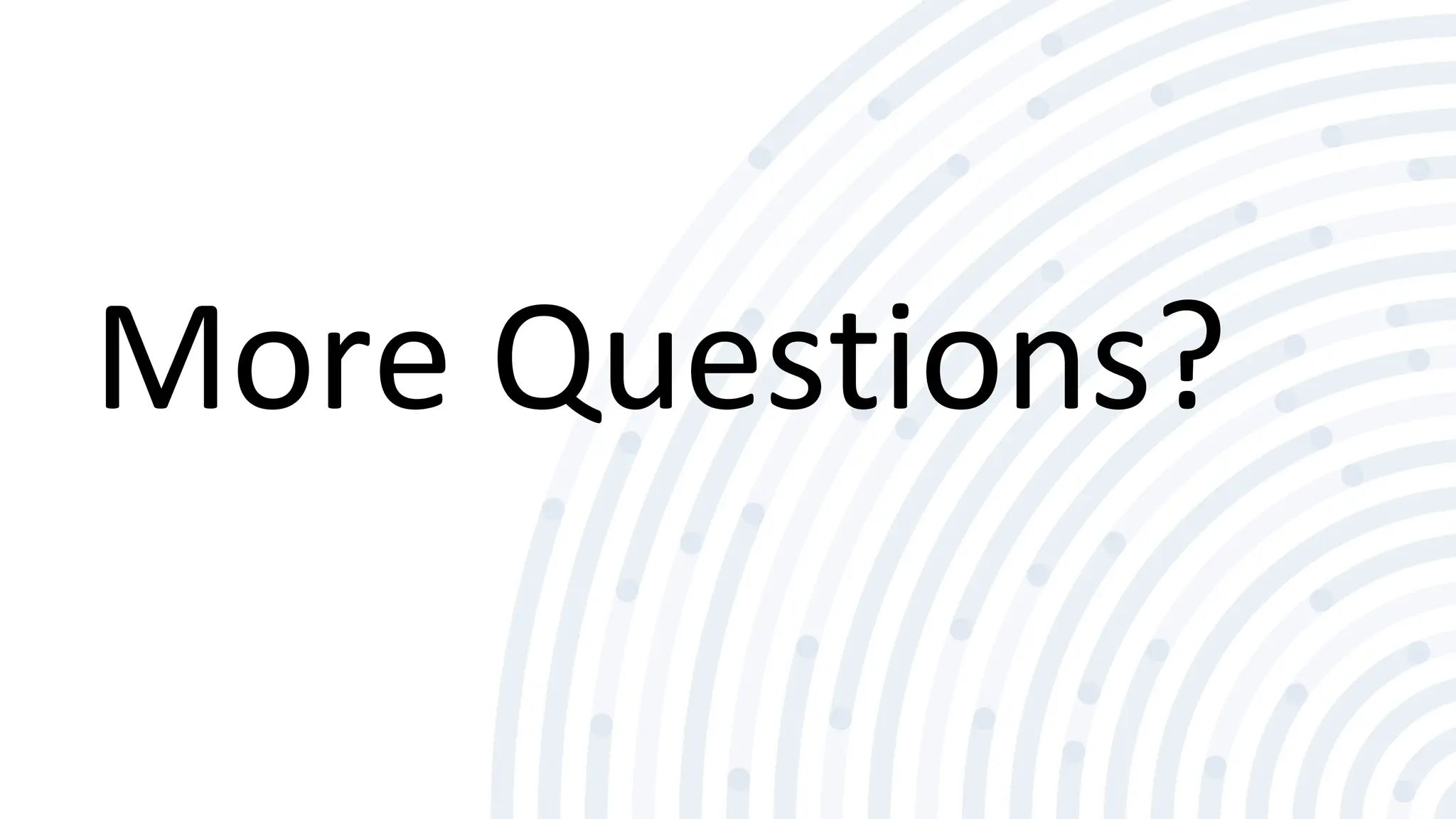The document outlines the principles of Agile methodology, advocating for individuals and interactions, working software, customer collaboration, and adapting to change over rigid processes. It emphasizes the benefits of Agile such as improved quality, customer satisfaction, and team morale, while also highlighting misconceptions about Agile being merely about processes and tools. The document also details the 12 guiding principles of Agile that focus on customer satisfaction, embracing change, and fostering team collaboration.
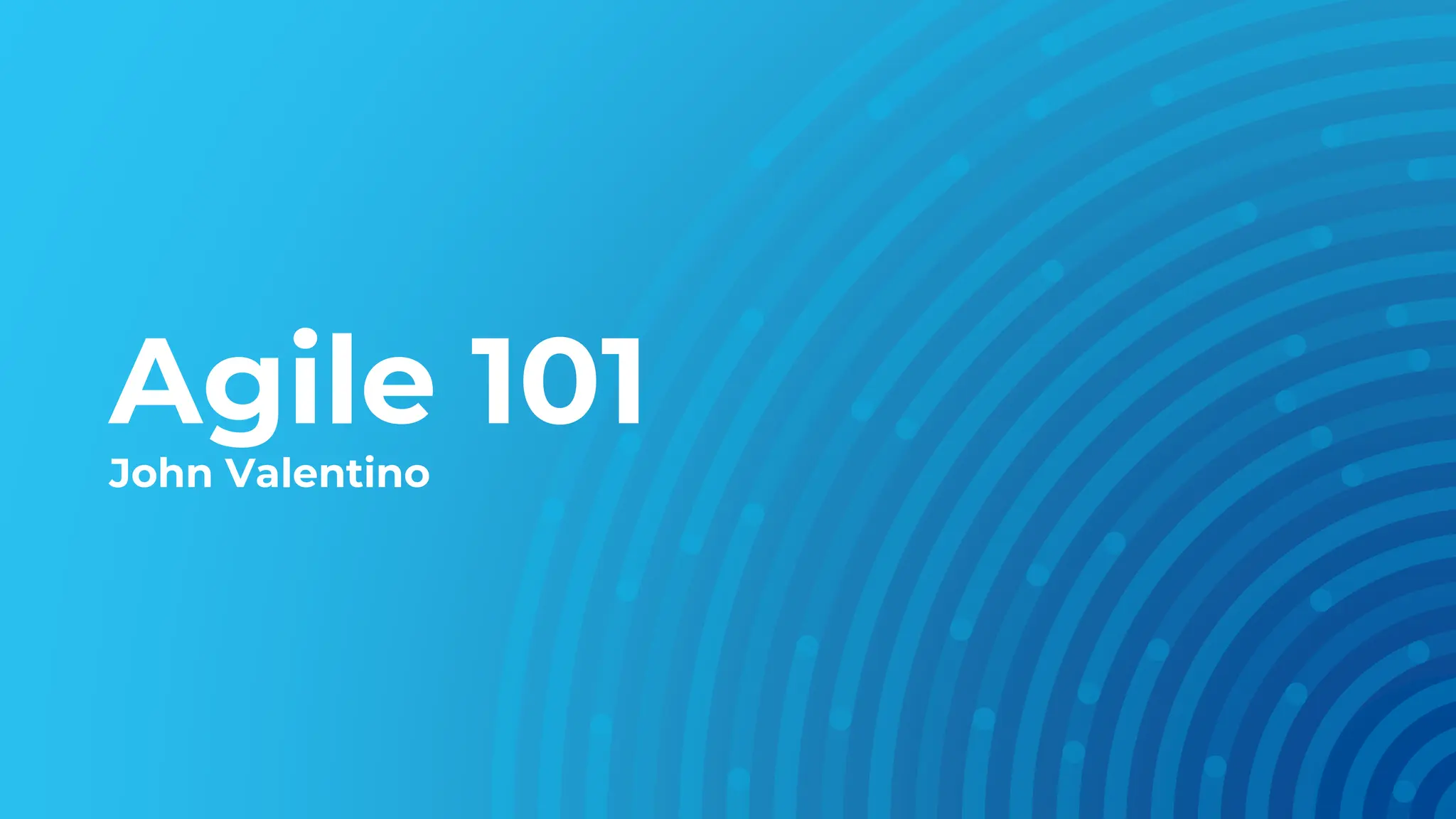
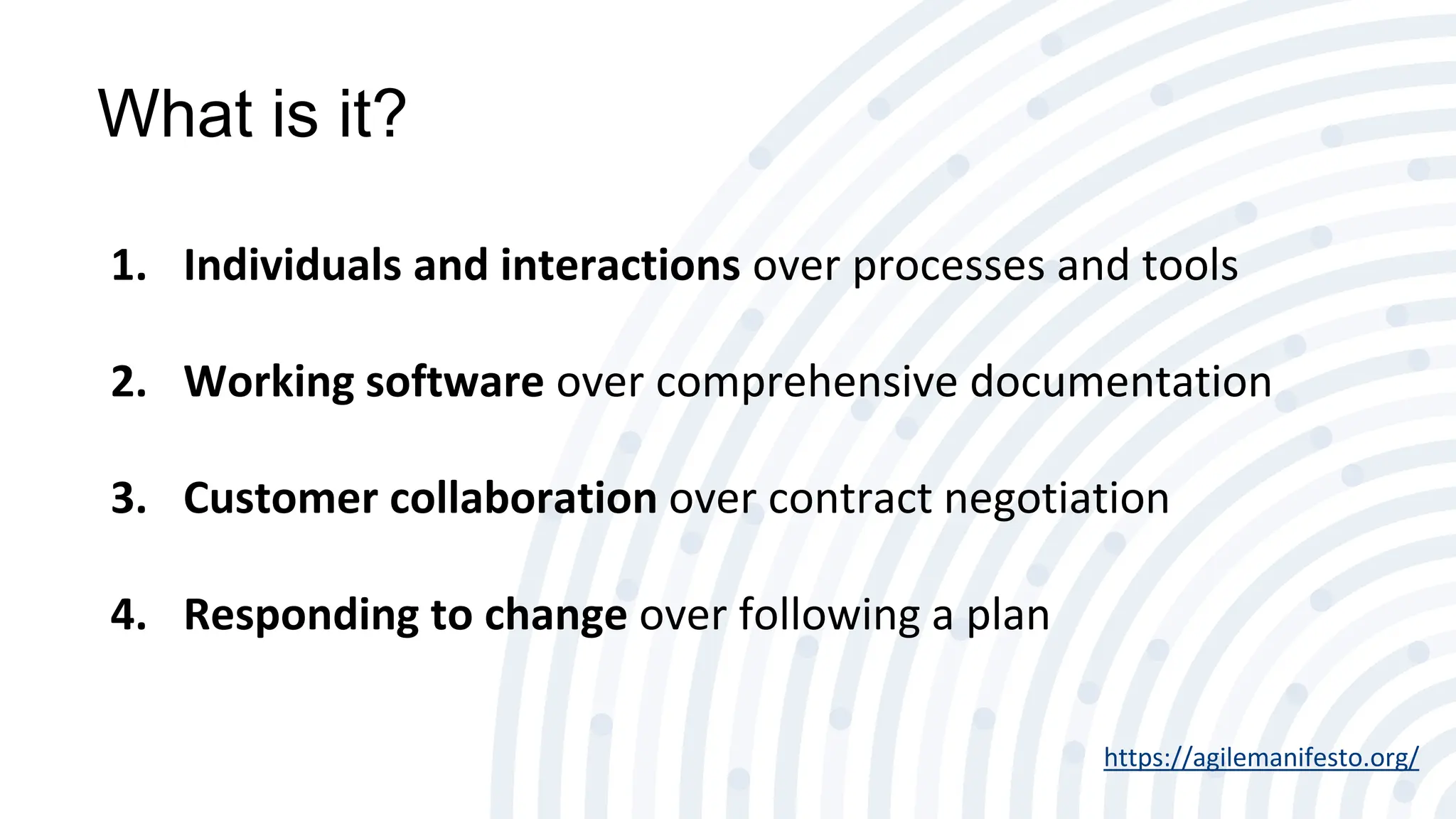
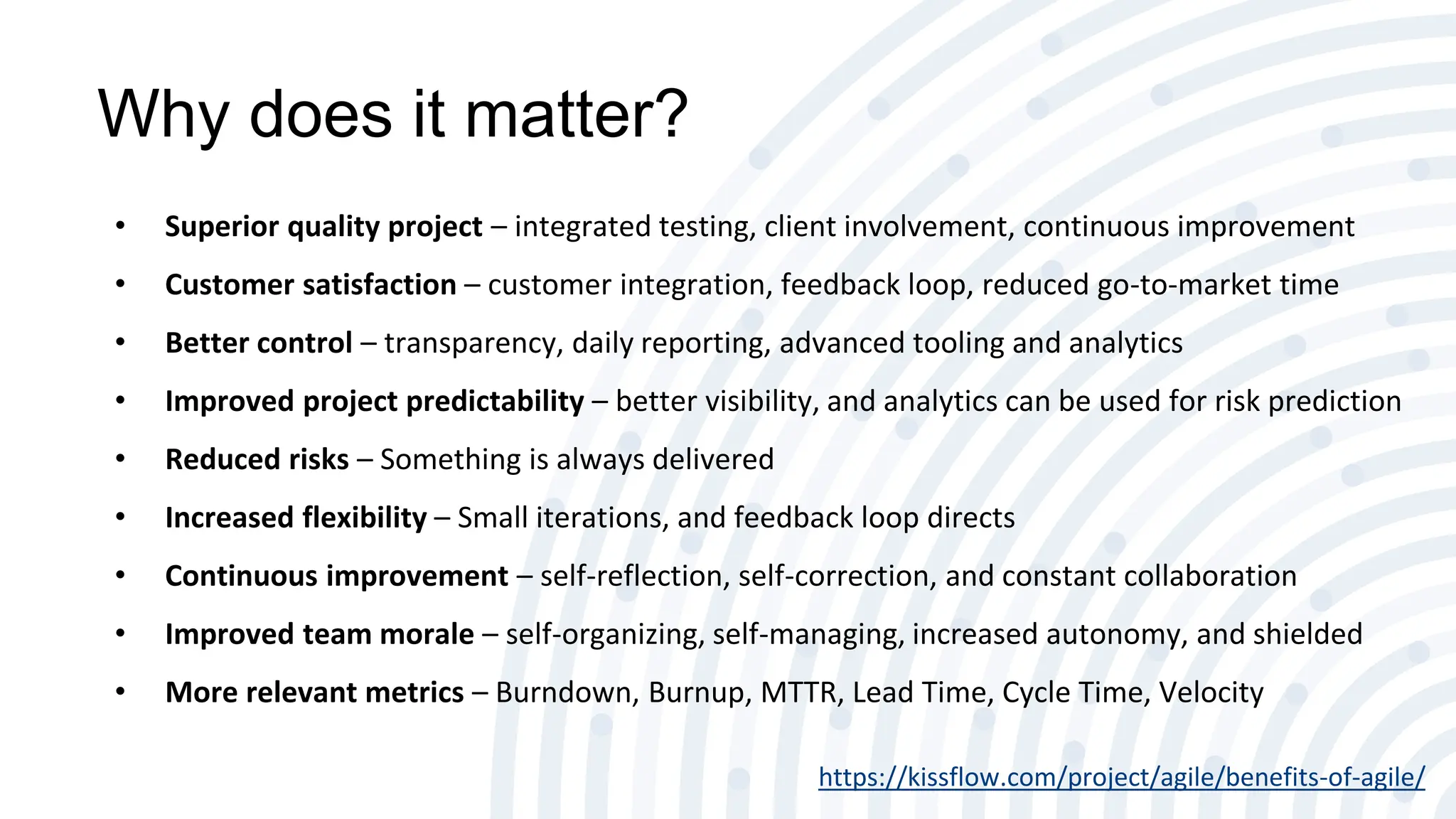
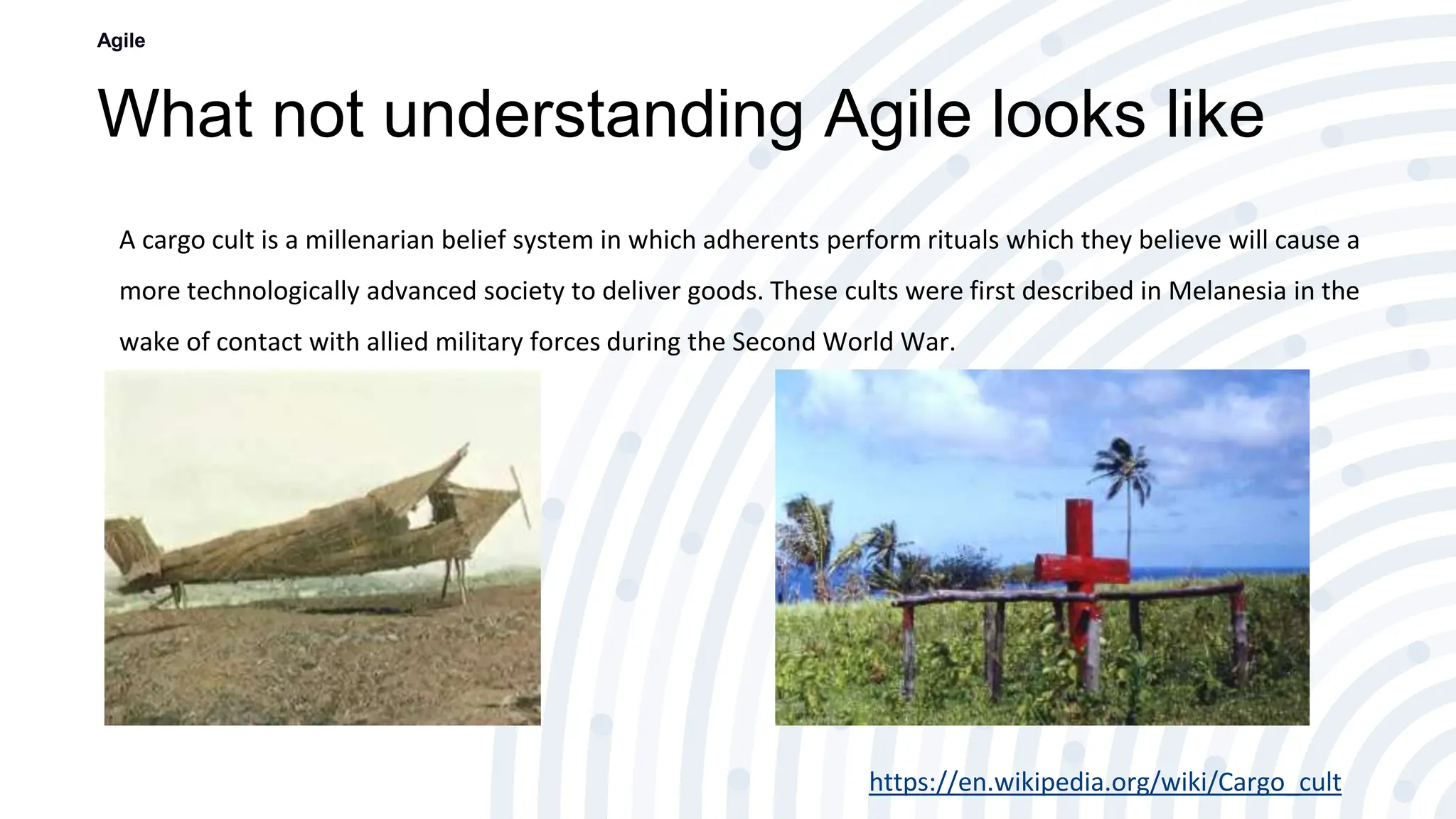
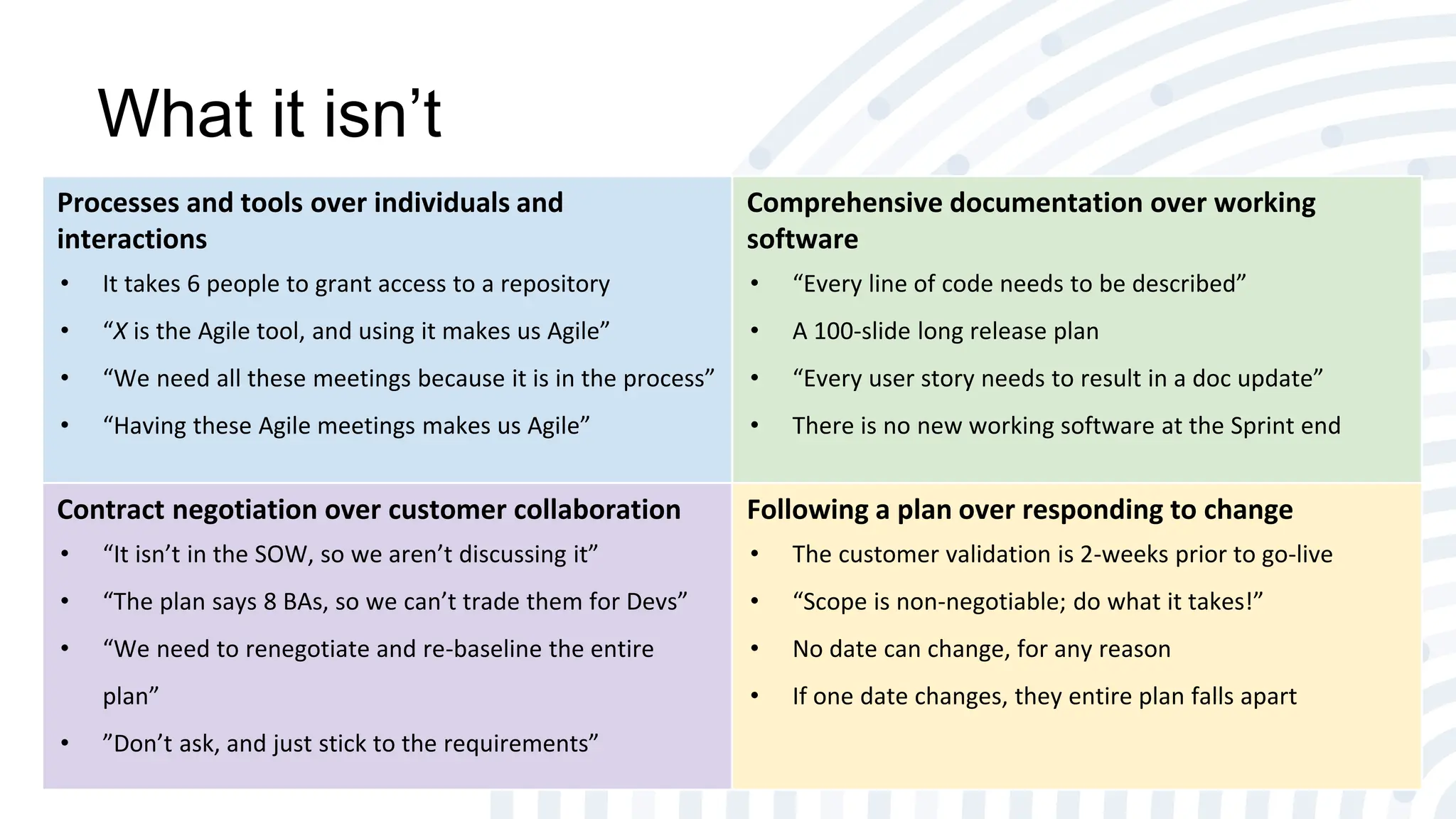
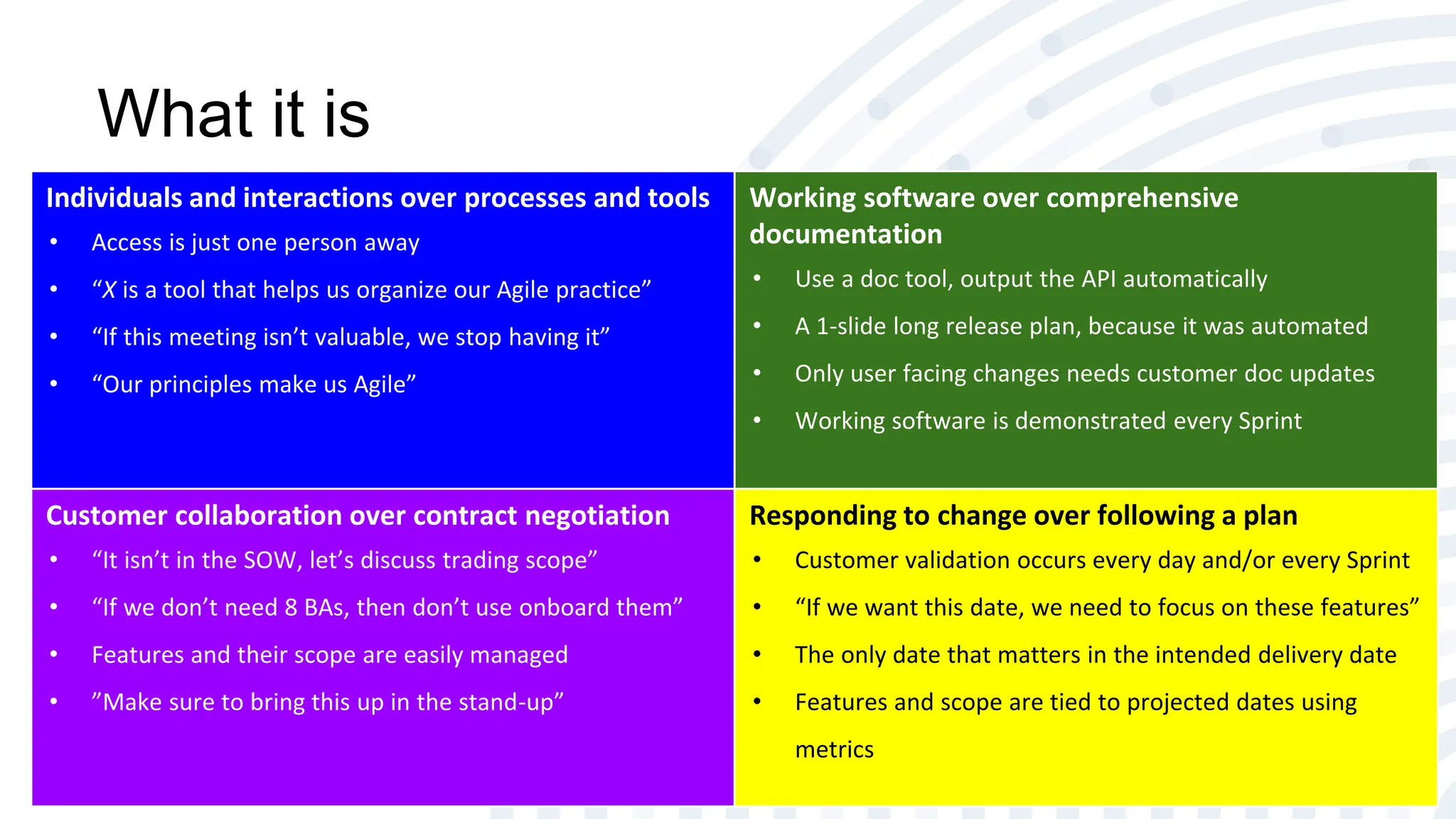
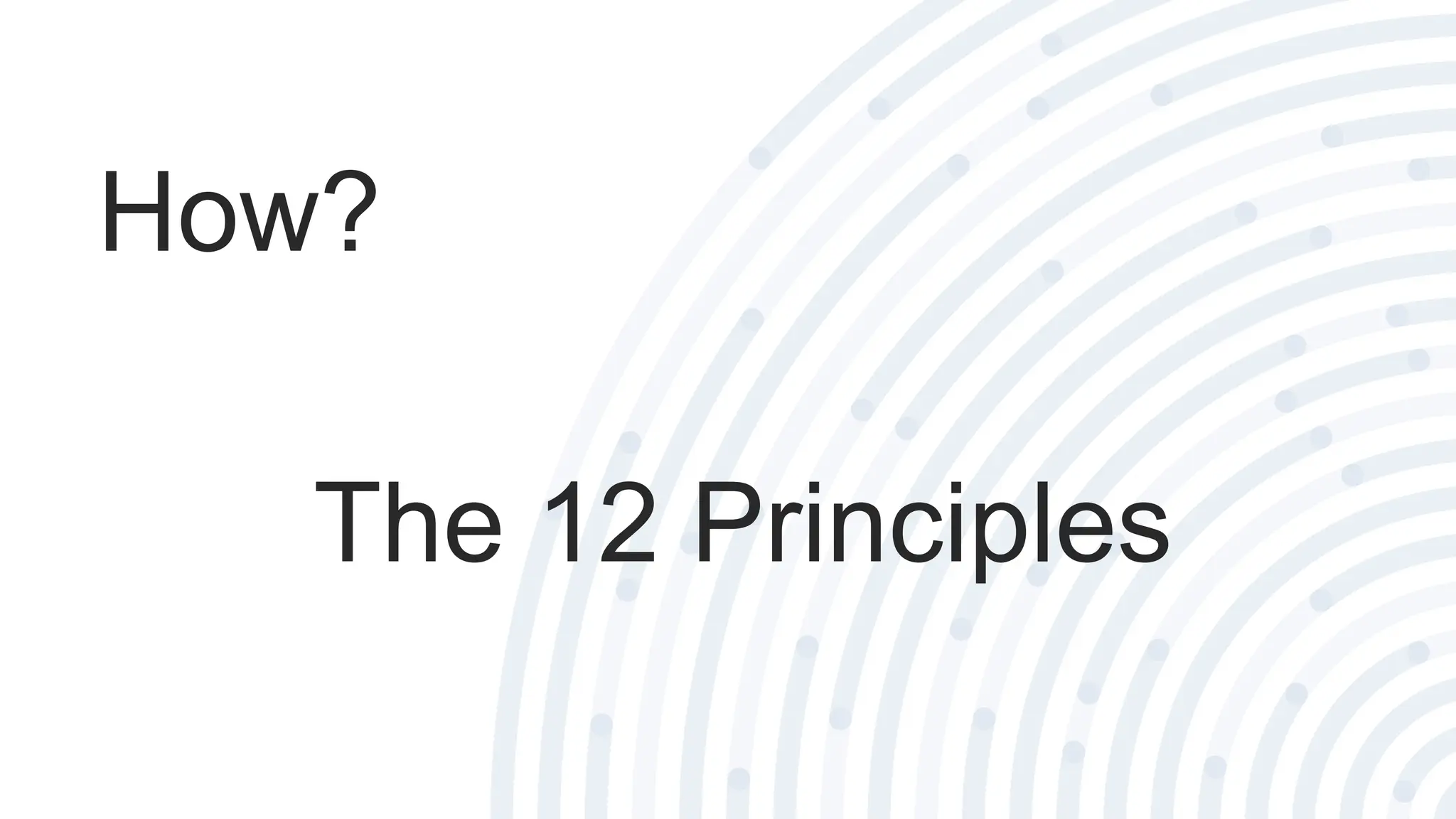
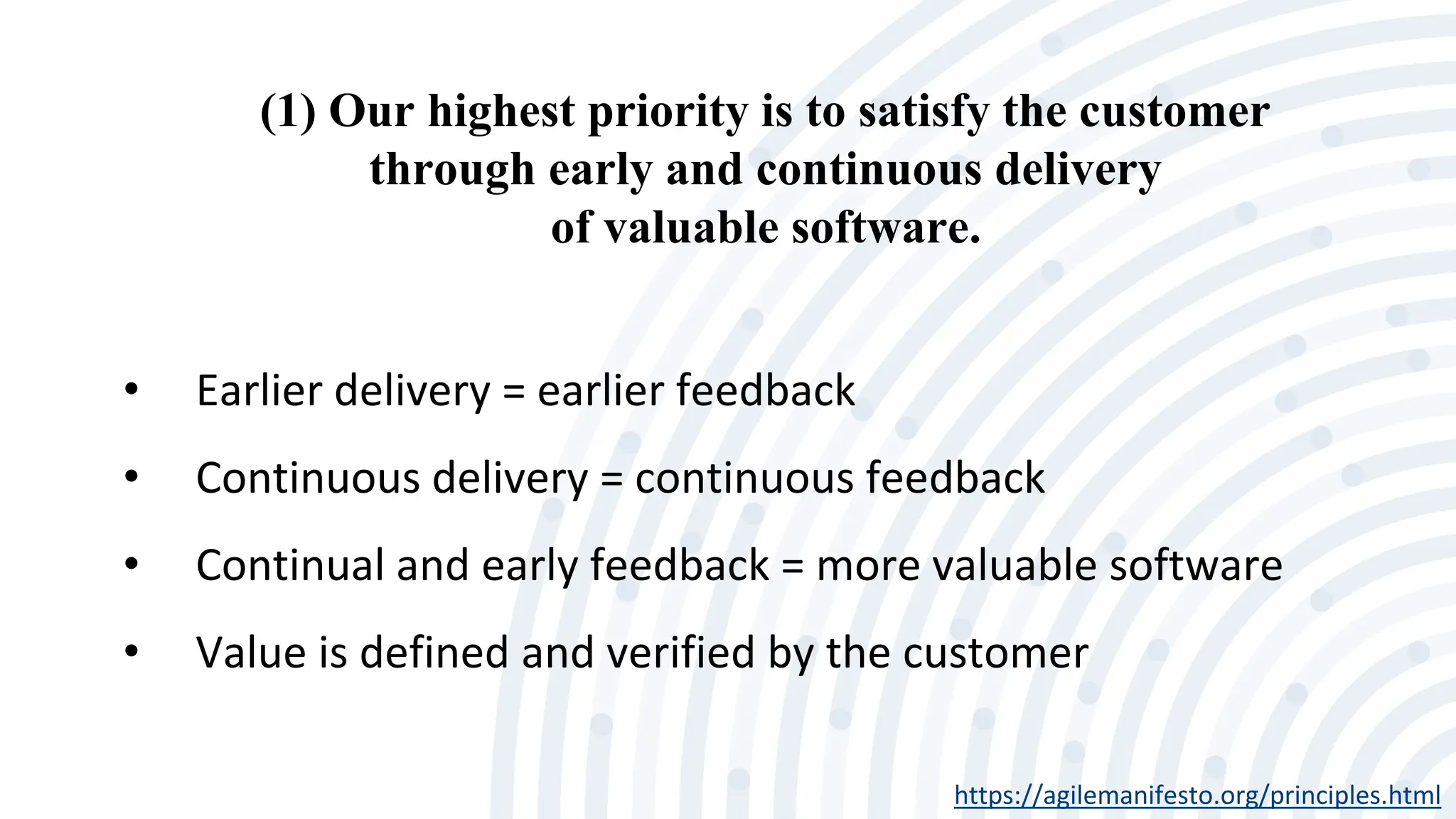
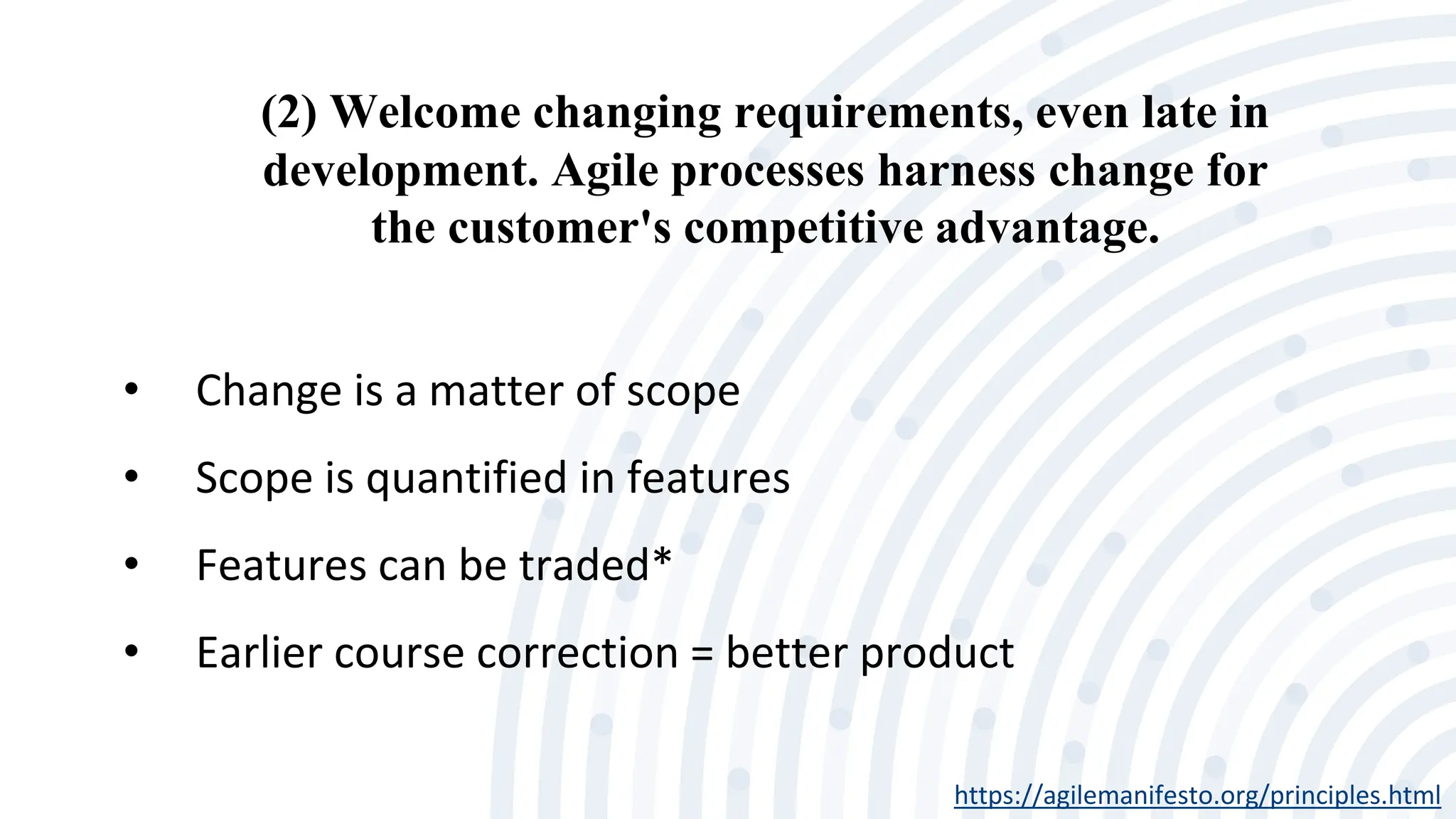
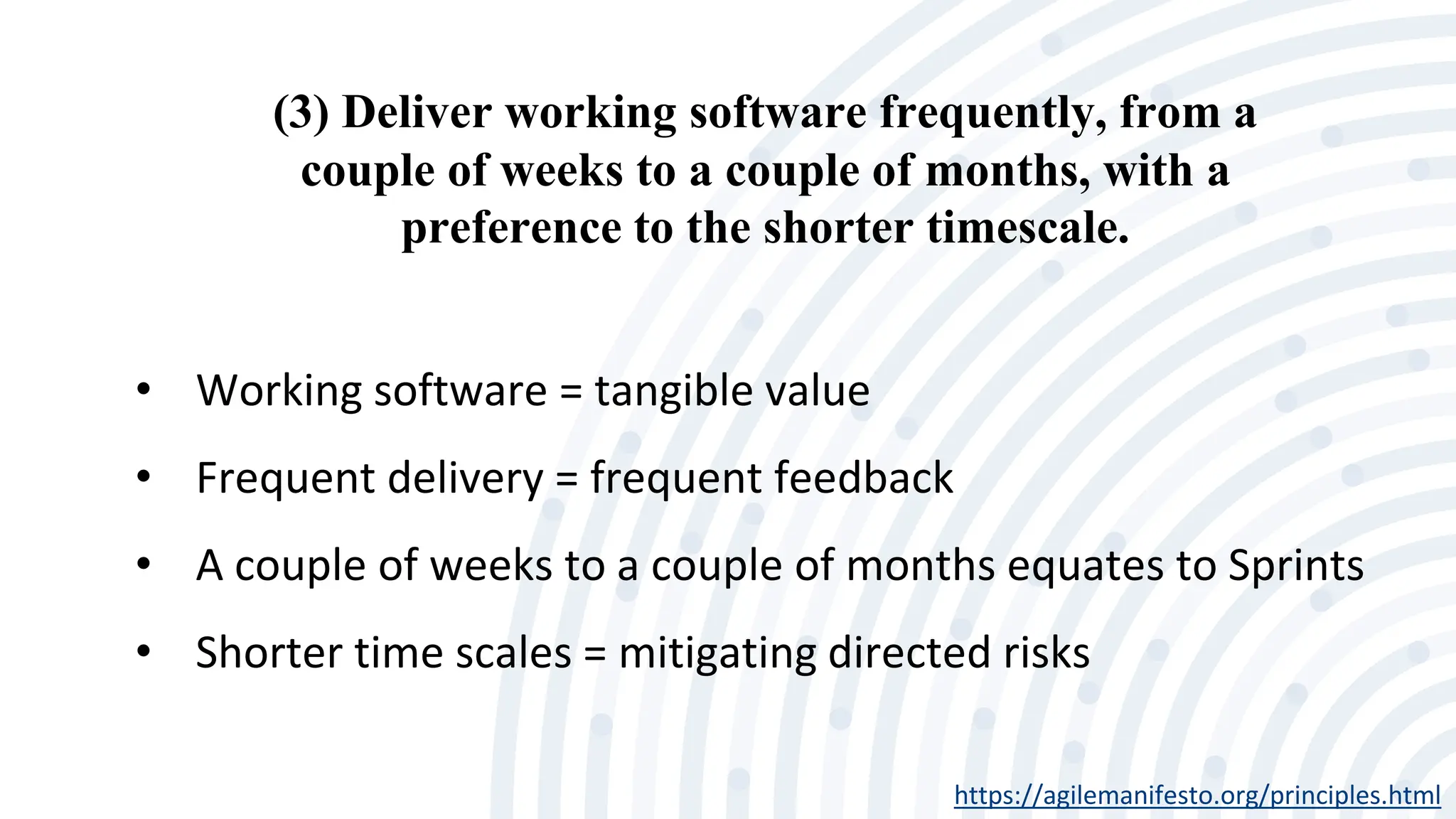
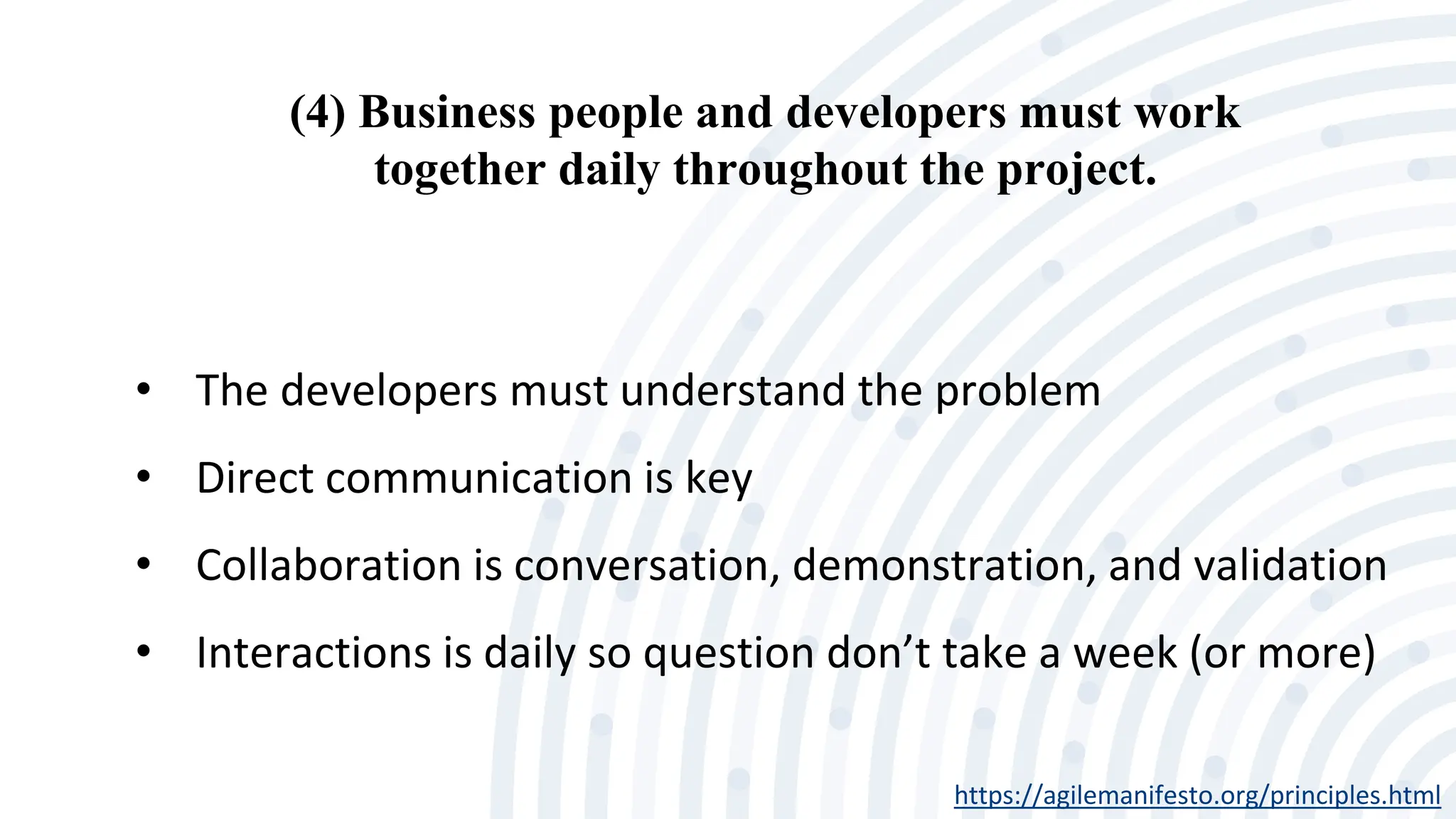
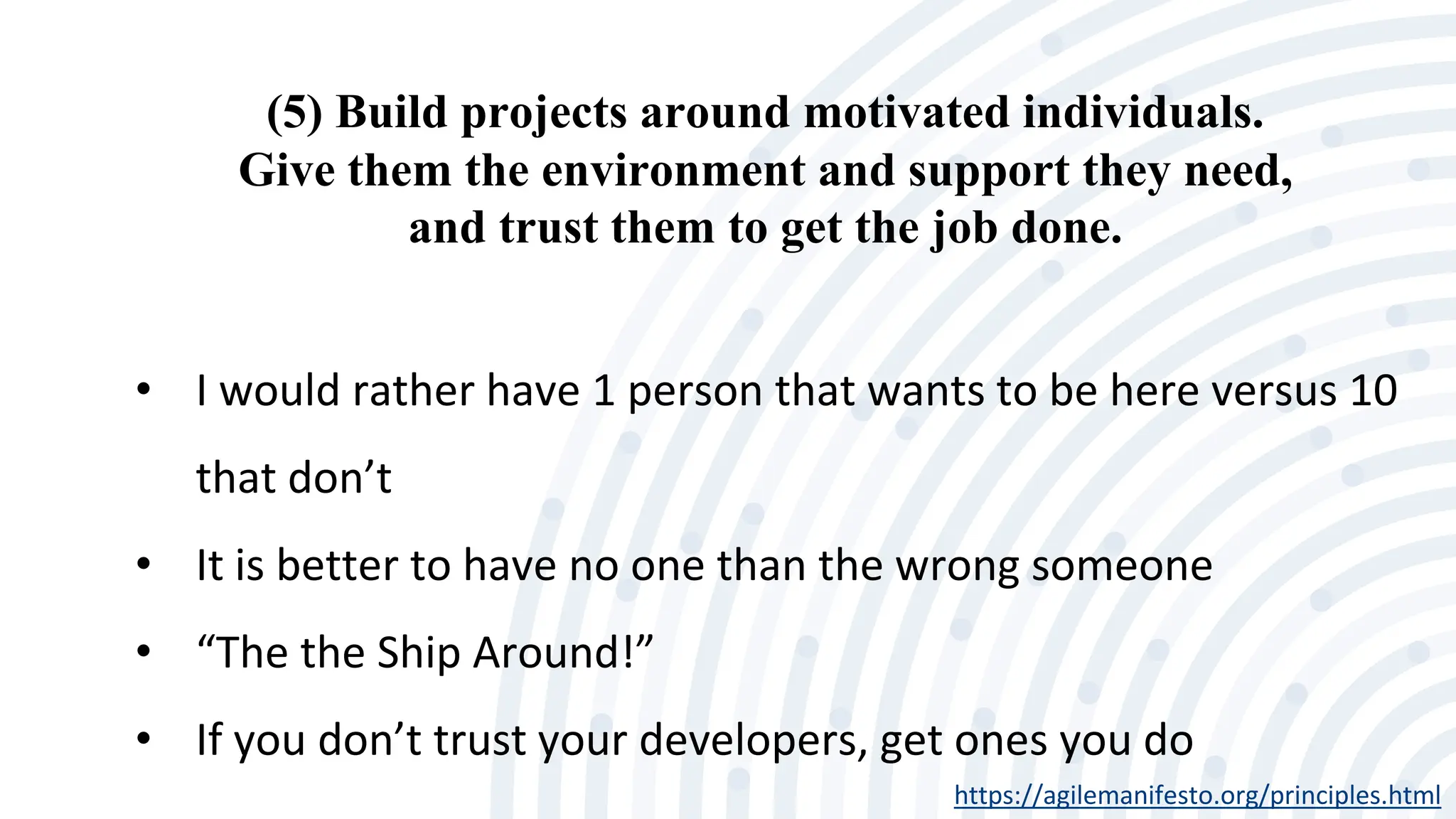
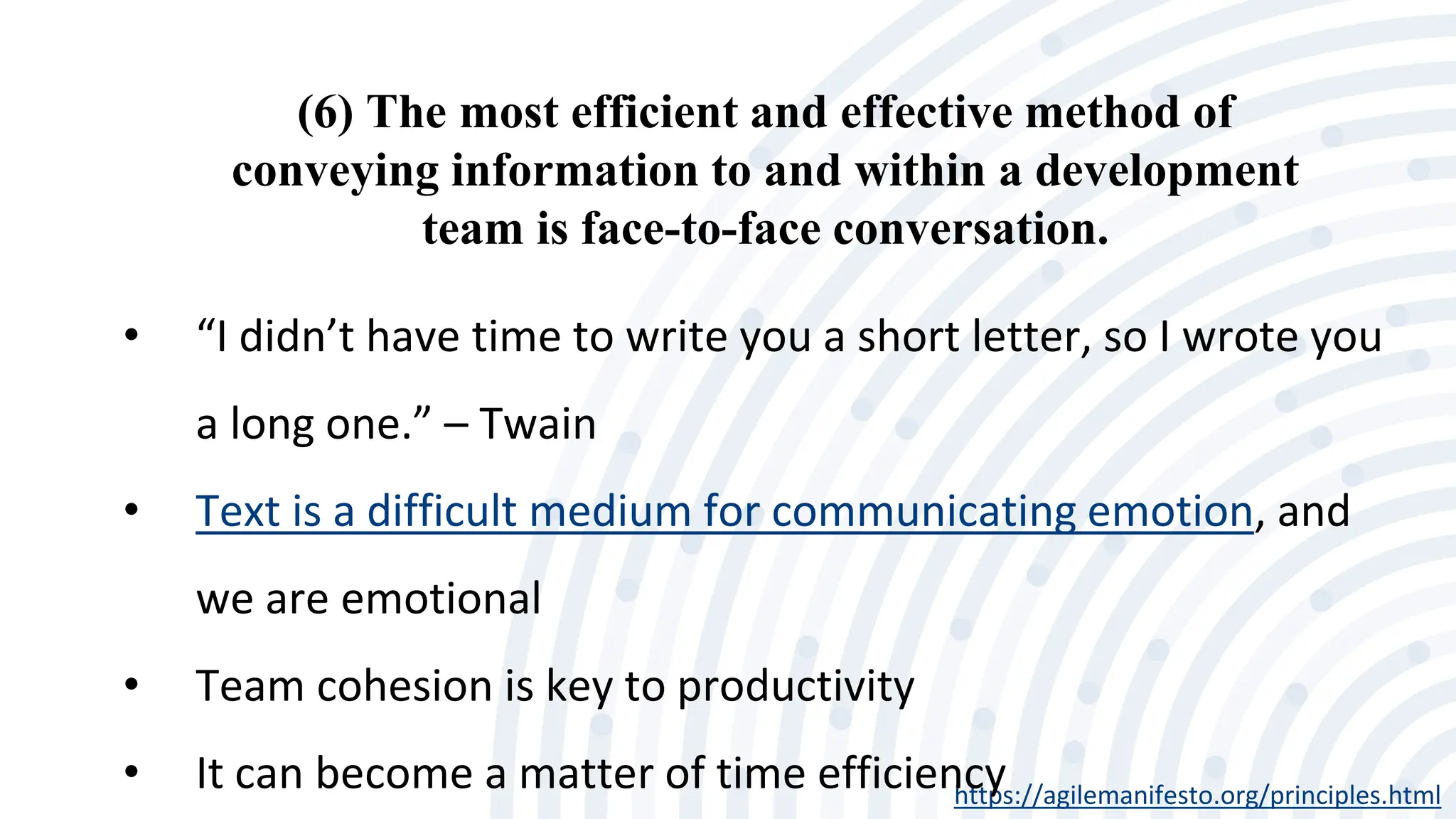
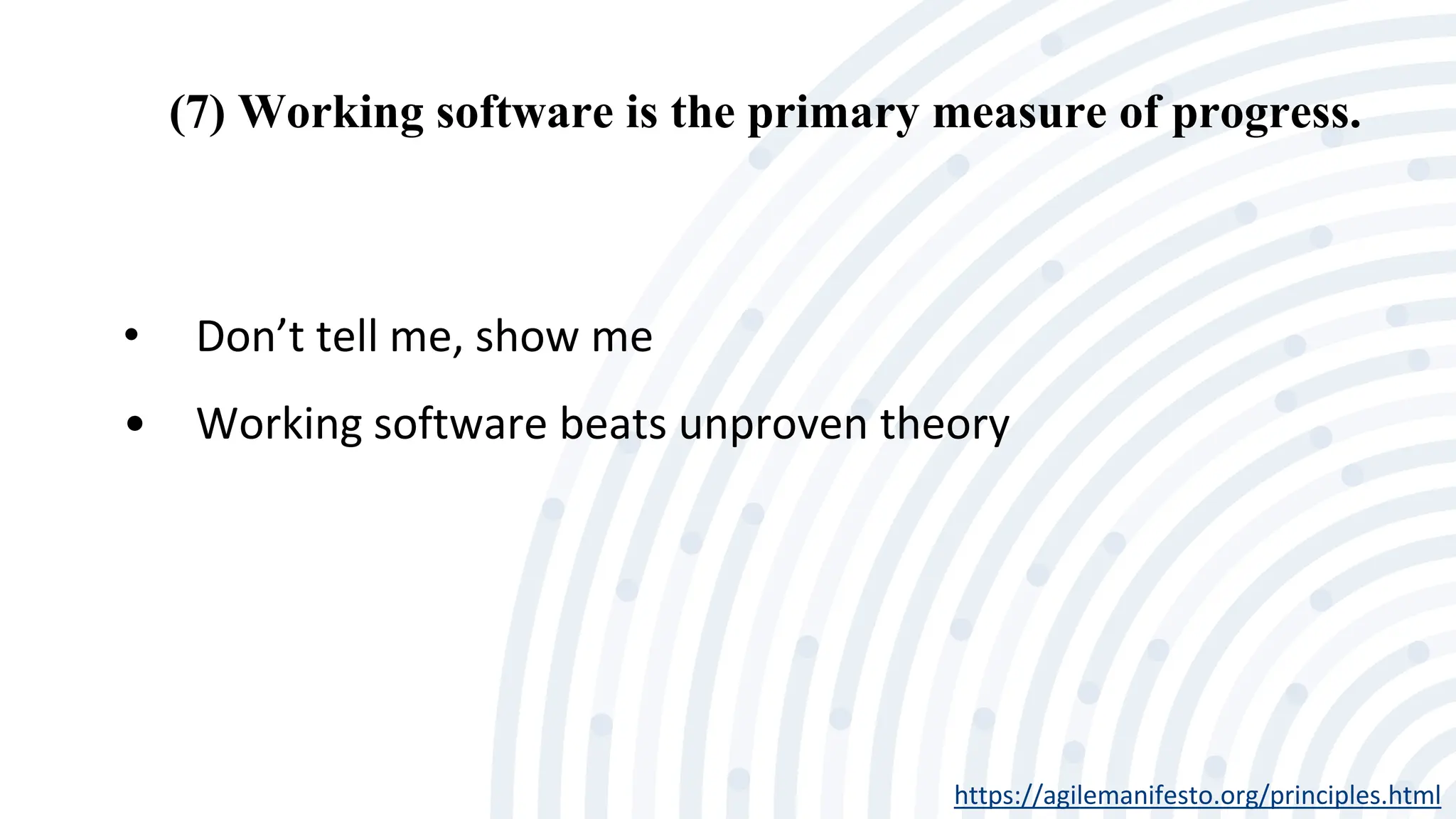
![(8) Agile processes promote sustainable development.
The sponsors, developers, and users should be able
to maintain a constant pace indefinitely.
https://agilemanifesto.org/principles.html
• “For you [this] was the most important day of your life. But
for me, it was Tuesday.” – Street Fighter, The Movie
• Burnout is real
• The cost of replacing teams every 6-12 months is higher than
keeping them](https://image.slidesharecdn.com/agile101-231201172429-d9f23177/75/Agile-101-15-2048.jpg)
